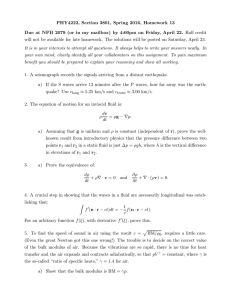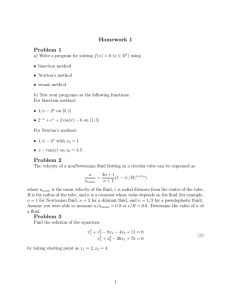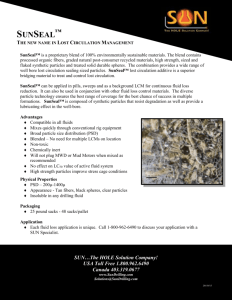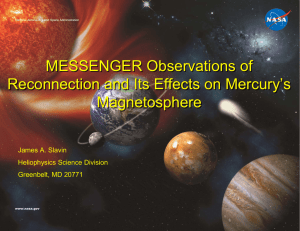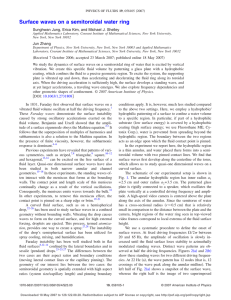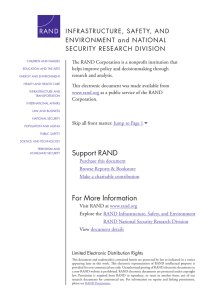Patrick D. Weidman
advertisement
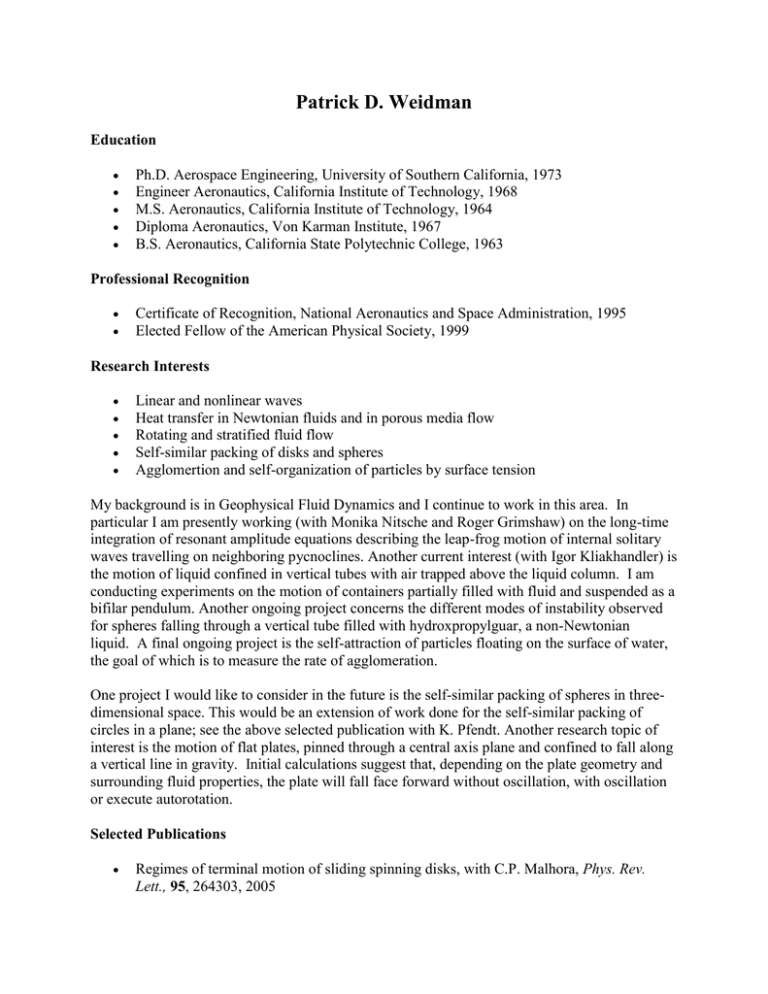
Patrick D. Weidman Education Ph.D. Aerospace Engineering, University of Southern California, 1973 Engineer Aeronautics, California Institute of Technology, 1968 M.S. Aeronautics, California Institute of Technology, 1964 Diploma Aeronautics, Von Karman Institute, 1967 B.S. Aeronautics, California State Polytechnic College, 1963 Professional Recognition Certificate of Recognition, National Aeronautics and Space Administration, 1995 Elected Fellow of the American Physical Society, 1999 Research Interests Linear and nonlinear waves Heat transfer in Newtonian fluids and in porous media flow Rotating and stratified fluid flow Self-similar packing of disks and spheres Agglomertion and self-organization of particles by surface tension My background is in Geophysical Fluid Dynamics and I continue to work in this area. In particular I am presently working (with Monika Nitsche and Roger Grimshaw) on the long-time integration of resonant amplitude equations describing the leap-frog motion of internal solitary waves travelling on neighboring pycnoclines. Another current interest (with Igor Kliakhandler) is the motion of liquid confined in vertical tubes with air trapped above the liquid column. I am conducting experiments on the motion of containers partially filled with fluid and suspended as a bifilar pendulum. Another ongoing project concerns the different modes of instability observed for spheres falling through a vertical tube filled with hydroxpropylguar, a non-Newtonian liquid. A final ongoing project is the self-attraction of particles floating on the surface of water, the goal of which is to measure the rate of agglomeration. One project I would like to consider in the future is the self-similar packing of spheres in threedimensional space. This would be an extension of work done for the self-similar packing of circles in a plane; see the above selected publication with K. Pfendt. Another research topic of interest is the motion of flat plates, pinned through a central axis plane and confined to fall along a vertical line in gravity. Initial calculations suggest that, depending on the plate geometry and surrounding fluid properties, the plate will fall face forward without oscillation, with oscillation or execute autorotation. Selected Publications Regimes of terminal motion of sliding spinning disks, with C.P. Malhora, Phys. Rev. Lett., 95, 264303, 2005 Model equations for the Eiffel Tower profile: Historical perspective and new results, with I. Pinelis, Comptes Rendus Mecanique, 332, 571-584, 2004 On the inverse Magnus effect in free molecular flow, with A. Herczynski, Phys. Fluids, 16, L9-L12, 2004 Vortex ring pairs: Numerical simulation and experiment, with N. Riley, J. Fluid Mech., 257, 311-337, 1993 On the radial packing of circles in the plan, with K. Pfendt, College Math. J.,21, 112-120, 1990 Capillary gravity waves with fixed contact lines: An approximate analysis, with A. Norris, Int. J. PhysicoChemical Hydrodynamics, 9, 393-402, 1987 Experiments on leapfrogging internal solitary waves, with M. Johnson, J. Fluid Mech., 122, 195-213, 1982.
